Top Home Improvements: Boosting Your Homes Value & Comfort
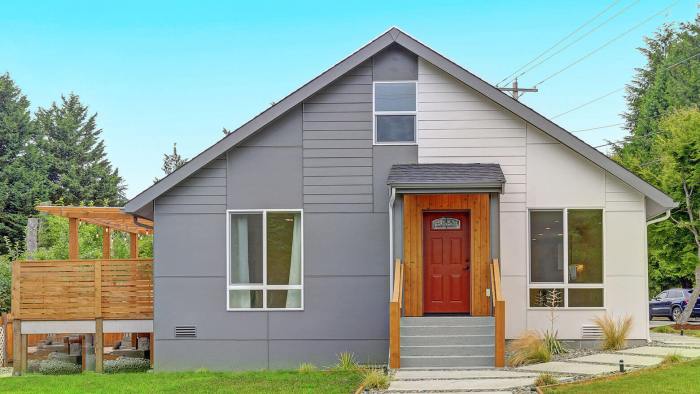
Top home improvements are a great way to increase your home’s value, enhance its functionality, and create a more comfortable living space. Whether you’re planning a complete overhaul or just a few upgrades, this guide will provide you with the information you need to make informed decisions.
From modernizing your kitchen and bathroom to improving energy efficiency and creating inviting outdoor living spaces, this guide will explore the most popular home improvement trends and provide practical advice for achieving your goals. We’ll delve into the advantages of different materials and techniques, offering insights on budgeting, planning, and execution.
So, let’s embark on a journey to transform your house into the home of your dreams!
Kitchen Renovations
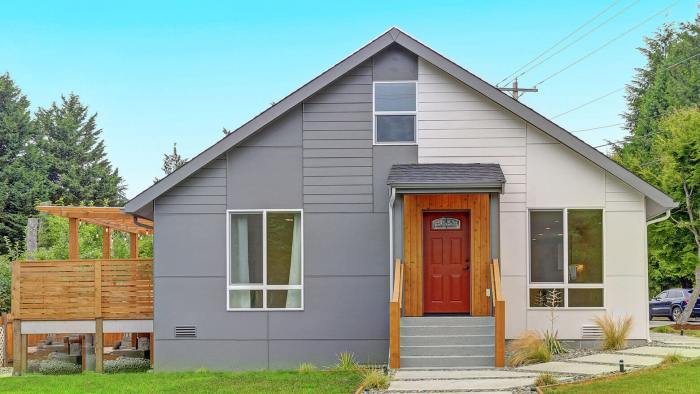
A kitchen renovation can significantly enhance the functionality and aesthetic appeal of your home. It’s an investment that can increase your home’s value and make your daily life more enjoyable. This section explores popular trends, material comparisons, design tips, and a step-by-step guide for installing new cabinets.
Kitchen Renovation Trends in 2023
The kitchen design landscape is constantly evolving, and 2023 brings a blend of practical and stylish trends. Here are some prominent ones:
- Open-Concept Layouts: Open kitchens seamlessly connect with living and dining areas, creating a spacious and inviting atmosphere. This trend emphasizes social interaction and allows for a more fluid flow of movement.
- Sustainable Materials: Eco-conscious homeowners are opting for sustainable materials like bamboo, reclaimed wood, and recycled glass for countertops, cabinets, and flooring. This trend aligns with a growing awareness of environmental impact.
- Smart Technology Integration: Smart appliances, touchless faucets, and integrated lighting systems are becoming increasingly common. These technologies enhance convenience and energy efficiency, making kitchens more functional and responsive.
- Statement Backsplashes: Bold and eye-catching backsplashes are a popular way to add personality and visual interest to kitchens. Materials like tile, stone, and even metal are used to create unique and impactful designs.
Comparison of Countertop Materials
Choosing the right countertop material is crucial for both aesthetics and durability. Granite, quartz, and laminate are popular options, each with its own set of advantages and disadvantages.
| Material | Advantages | Disadvantages |
|---|---|---|
| Granite | Natural stone with unique patterns, heat-resistant, durable, and scratch-resistant. | Porous, requires sealing, can be expensive, prone to staining if not properly maintained. |
| Quartz | Engineered stone, non-porous, stain-resistant, scratch-resistant, available in various colors and patterns. | Can be more expensive than laminate, and may show scratches or chips if not properly installed. |
| Laminate | Affordable, easy to clean, available in a wide range of styles and colors, durable. | Not as heat-resistant as granite or quartz, can be prone to scratches and chips, and has a less luxurious appearance. |
Small Kitchen Layout Design
Maximizing functionality and storage space in a small kitchen is key. Here’s a design concept for a compact kitchen:
- L-Shaped Layout: An L-shaped configuration provides ample countertop and cabinet space while creating distinct zones for cooking, prepping, and cleaning.
- Wall-Mounted Cabinets: Utilize vertical space with tall wall-mounted cabinets that extend to the ceiling, maximizing storage capacity.
- Pull-Out Shelves and Drawers: Incorporate pull-out shelves and drawers in base cabinets for easy access to items stored in the back.
- Open Shelving: Include open shelves for displaying decorative items and frequently used dishes, adding visual interest and minimizing clutter.
Installing New Kitchen Cabinets
Installing new cabinets can significantly transform the look and feel of your kitchen. This step-by-step guide provides a general overview of the process:
- Preparation: Clear the area, remove existing cabinets, and measure the space accurately. Ensure the walls are level and the floor is smooth.
- Base Cabinet Installation: Begin with the base cabinets, starting with the corner cabinets. Use shims to ensure levelness and stability. Secure cabinets to the wall with screws.
- Upper Cabinet Installation: Install the upper cabinets after the base cabinets are securely in place. Use a level to ensure proper alignment and secure them to the wall.
- Cabinet Doors and Drawers: Attach the cabinet doors and drawers, ensuring they are aligned and operate smoothly. Adjust hinges and drawer slides as needed.
- Countertop Installation: Install the countertop, ensuring it fits snugly and is properly sealed. Attach the sink and faucet.
- Finishing Touches: Install backsplash, trim, and lighting. Clean and organize the new cabinets.
Bathroom Upgrades
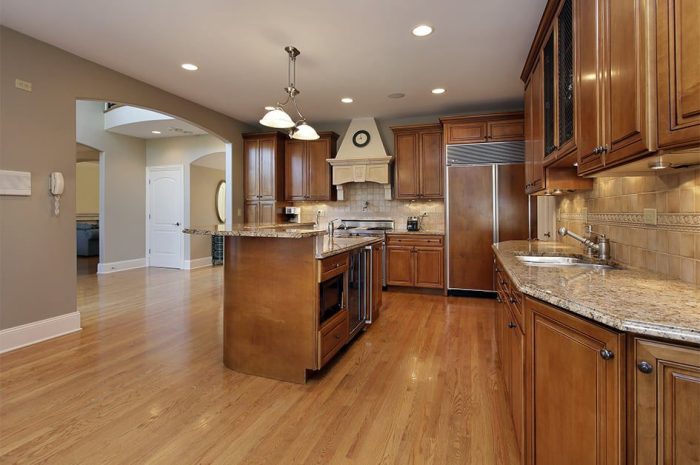
Transforming your bathroom into a spa-like oasis is a popular home improvement project. From sleek fixtures to modern finishes, bathroom upgrades can enhance both functionality and aesthetics.
Converting a Bathtub to a Walk-in Shower
Converting a bathtub to a walk-in shower offers several advantages, making it an appealing option for many homeowners. This transformation not only enhances accessibility but also provides a modern and spacious feel to your bathroom.
- Enhanced Accessibility: Walk-in showers eliminate the need to step over a high bathtub ledge, making it easier and safer for individuals with mobility limitations, seniors, and people with disabilities.
- Increased Space: Removing the bathtub frees up valuable floor space, creating a more spacious and airy bathroom environment.
- Modern Aesthetic: Walk-in showers offer a contemporary and sleek look, complementing modern bathroom designs.
- Improved Safety: Walk-in showers are less prone to slips and falls compared to bathtubs, particularly for individuals with balance issues.
- Water Conservation: Walk-in showers generally use less water than bathtubs, contributing to a more sustainable bathroom experience.
Bathroom Tile Styles and Color Palettes
Choosing the right tile style and color palette is crucial for creating a bathroom that reflects your taste and style. Here’s a mood board showcasing some popular bathroom tile options:
Classic White Subway Tile: A timeless choice, white subway tiles offer a clean and elegant look, suitable for various bathroom styles. They can be paired with contrasting grout colors for a modern touch or kept simple for a minimalist aesthetic.
Geometric Patterns: For a more dynamic and modern feel, geometric tiles, such as hexagonal or chevron patterns, add visual interest and texture to the bathroom.
Natural Stone Tiles: Natural stone tiles, like marble or granite, bring a luxurious and sophisticated ambiance to the bathroom. They are available in various colors and patterns, adding warmth and elegance.
Bold Color Accents: Introduce pops of color with accent tiles, such as a patterned border or a statement wall. This adds visual interest and complements the overall bathroom design.
Neutral Color Palette: A neutral color palette, such as grays, whites, and beige, creates a serene and calming bathroom atmosphere.
Warm Color Palette: For a cozy and inviting feel, opt for warm tones like browns, yellows, and oranges. These colors can be incorporated through tiles, accessories, and even the grout.
Essential Bathroom Fixtures and Features
Selecting the right bathroom fixtures is crucial for creating a functional and stylish space. Here’s a list of essential fixtures and their features:
- Vanity: The vanity is the centerpiece of the bathroom, providing storage and a surface for the sink. Consider the size, style, and storage options when selecting a vanity.
- Sink: Sinks come in various styles, from traditional pedestal sinks to modern vessel sinks. Choose a sink that complements the vanity and offers the desired functionality.
- Toilet: Toilets are available in different styles, including one-piece, two-piece, and elongated bowls. Consider features like water efficiency and comfort when making your selection.
- Shower Head: Shower heads offer a range of spray patterns and water-saving features. Explore options like rain shower heads, handheld shower heads, and body sprayers.
- Faucet: Bathroom faucets come in various finishes and styles. Choose a faucet that complements the overall bathroom design and offers the desired features, such as temperature control and water-saving technology.
- Lighting: Adequate lighting is essential for a functional and aesthetically pleasing bathroom. Consider using a combination of ambient, task, and accent lighting to create a balanced and inviting space.
- Mirrors: Mirrors are essential for a bathroom, adding a sense of spaciousness and reflecting light. Consider using a large mirror above the vanity or incorporating smaller accent mirrors throughout the space.
- Storage: Adequate storage is crucial for a well-organized bathroom. Consider using cabinets, shelves, drawers, and baskets to keep your bathroom essentials tidy.
Installing a New Bathroom Vanity
Installing a new bathroom vanity can significantly upgrade your bathroom’s look and functionality. Here’s a step-by-step guide for installing a new vanity:
- Prepare the Area: Clear the area around the existing vanity, disconnect the water supply, and remove the old vanity.
- Install the New Vanity: Position the new vanity in the desired location and secure it to the wall using appropriate mounting hardware.
- Connect the Water Supply: Connect the water supply lines to the vanity’s faucet, ensuring all connections are secure and leak-free.
- Install the Sink: Install the sink on the vanity, securing it with the appropriate hardware.
- Install the Faucet: Install the faucet on the sink, following the manufacturer’s instructions.
- Connect the Drain: Connect the drainpipe to the sink and vanity, ensuring a secure and leak-free connection.
- Test for Leaks: Turn on the water supply and check for any leaks at the faucet, sink, and drain connections.
Energy Efficiency Improvements: Top Home Improvements

Making your home more energy-efficient is a smart investment that saves money on utility bills, reduces your environmental impact, and increases your home’s value. Energy efficiency improvements can be as simple as changing light bulbs or as complex as installing solar panels.
Energy-Efficient Windows and Doors
Upgrading to energy-efficient windows and doors is a significant step towards reducing energy consumption and enhancing your home’s comfort. Modern windows and doors are designed with advanced features that minimize heat loss in winter and heat gain in summer.
- Improved Insulation: Energy-efficient windows and doors use multiple panes of glass with insulating gas fills, reducing heat transfer and minimizing drafts.
- Low-E Coatings: Low-emissivity (Low-E) coatings are applied to the glass to reflect infrared radiation, further reducing heat loss and gain.
- Frame Materials: High-performance frame materials, such as fiberglass or composite, provide excellent insulation and durability.
Improving Home Insulation
Adequate insulation is crucial for maintaining a comfortable indoor temperature and reducing energy consumption. Proper insulation acts as a barrier against heat loss in winter and heat gain in summer.
- Attic Insulation: The attic is a major source of heat loss, so ensuring proper insulation is essential. Adding insulation to the attic floor can significantly reduce energy consumption.
- Wall Insulation: Insulating exterior walls can prevent heat from escaping during the winter and keep your home cool in the summer.
- Basement Insulation: Insulating basement walls and floors can prevent cold air from entering the living space, reducing heating costs.
Solar Panels
Installing solar panels on your roof can significantly reduce your reliance on the grid and save money on electricity bills. Solar panels convert sunlight into electricity, generating clean energy for your home.
- Cost-Effectiveness: While the initial investment in solar panels can be significant, the long-term savings on electricity bills make it a cost-effective investment. Government incentives and tax credits can further reduce the overall cost.
- Environmental Benefits: Solar energy is a renewable and clean source of energy, reducing your carbon footprint and contributing to a sustainable future.
- Increased Home Value: Homes with solar panels are often more attractive to buyers, potentially increasing your home’s value.
Energy Audit
An energy audit is a comprehensive assessment of your home’s energy consumption and identifies areas for improvement. A professional energy auditor can conduct a thorough inspection of your home, including insulation levels, air sealing, and appliance efficiency.
- Identify Problem Areas: An energy audit helps pinpoint areas where heat is being lost or gained, enabling you to target specific improvements.
- Prioritize Upgrades: The audit provides a prioritized list of recommendations for energy-efficient upgrades, allowing you to focus on the most impactful improvements.
- Receive Customized Recommendations: An energy auditor can provide personalized recommendations based on your home’s unique characteristics and your energy consumption patterns.
Outdoor Living Spaces
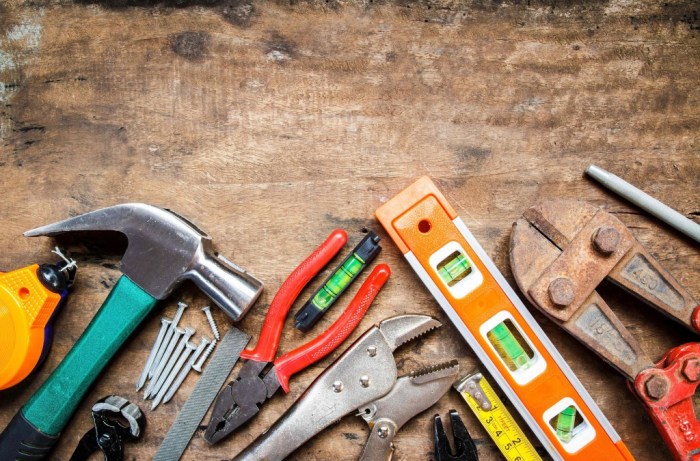
Transforming your backyard into a haven for relaxation and entertainment can significantly enhance your home’s value and enjoyment. Outdoor living spaces offer a seamless transition between indoor and outdoor living, creating a versatile and inviting atmosphere.
Designing a Backyard Patio Area
A well-designed patio area can be the focal point of your outdoor living space. It’s essential to consider factors such as size, shape, materials, and functionality. A comfortable seating arrangement is crucial, and you can choose from various options, such as patio furniture sets, outdoor sofas, or even built-in seating.
Incorporating a fire pit adds warmth and ambiance, creating a cozy gathering spot for evenings. Landscaping plays a vital role in defining the space and enhancing its aesthetic appeal. Consider adding plants, flowers, or even a small water feature to create a tranquil and inviting atmosphere.
Outdoor Lighting Options, Top home improvements
Adequate lighting is essential for extending the use of your outdoor living space into the evening hours. Various lighting options cater to different purposes and create distinct moods.
- Ambient Lighting: Provides general illumination and creates a welcoming atmosphere. String lights, lanterns, and solar-powered path lights are excellent options for ambient lighting.
- Task Lighting: Provides focused light for specific activities, such as reading or dining. Consider using wall sconces, pendant lights, or even strategically placed spotlights.
- Accent Lighting: Highlights specific features, such as landscaping, sculptures, or architectural elements. Uplights, downlights, and spotlights can be used to create dramatic effects and enhance the visual appeal of your outdoor space.
Building a Deck or Pergola
Can add significant value and functionality to your outdoor living space.
Building a Deck
- Planning and Design: Determine the size, shape, and location of your deck. Consider the existing landscaping, drainage, and access points. Obtain the necessary permits and choose the right materials for your deck, such as pressure-treated lumber, composite decking, or cedar.
- Foundation and Framing: Prepare the foundation by leveling the ground and installing concrete piers or footings. Construct the framing using pressure-treated lumber, ensuring proper spacing and support for the deck boards.
- Decking Installation: Install the decking boards, ensuring they are properly secured to the framing. Choose a pattern that complements the overall design of your deck.
- Finishing Touches: Add railings, stairs, and any other desired features. Apply a sealant or stain to protect the wood and enhance its appearance.
Building a Pergola
- Planning and Design: Determine the size, shape, and location of your pergola. Consider the existing landscaping, drainage, and access points. Choose the right materials for your pergola, such as pressure-treated lumber, cedar, or composite materials.
- Post Installation: Install the posts, ensuring they are level and securely anchored to the ground. Use concrete footings or metal sleeves for stability.
- Beam and Rafter Installation: Install the beams and rafters, ensuring they are properly supported and connected to the posts. Use a level and plumb bob to ensure accuracy.
- Roofing and Finishing Touches: Add a roof to your pergola using lattice, corrugated metal, or other suitable materials. Consider adding climbing plants for shade and privacy.
Swimming Pool or Hot Tub Installation
Installing a swimming pool or hot tub can transform your backyard into a luxurious oasis.
Swimming Pool
- Types of Pools: Consider the different types of pools available, such as in-ground pools, above-ground pools, and infinity pools. Choose a pool that suits your budget, space, and desired features.
- Maintenance and Costs: Swimming pools require regular maintenance, including cleaning, filtration, and chemical balancing. Factor in the ongoing costs of maintenance and energy consumption when making your decision.
- Safety and Regulations: Ensure that your pool meets local safety regulations and install appropriate safety features, such as fences, alarms, and covers.
Hot Tub
- Types of Hot Tubs: Consider the different types of hot tubs available, such as portable hot tubs, inflatable hot tubs, and built-in hot tubs. Choose a hot tub that suits your budget, space, and desired features.
- Maintenance and Costs: Hot tubs require regular maintenance, including cleaning, filtration, and chemical balancing. Factor in the ongoing costs of maintenance and energy consumption when making your decision.
- Health Benefits: Hot tubs offer numerous health benefits, including stress relief, muscle relaxation, and improved circulation. Consult with your doctor before using a hot tub if you have any health concerns.
Home Automation
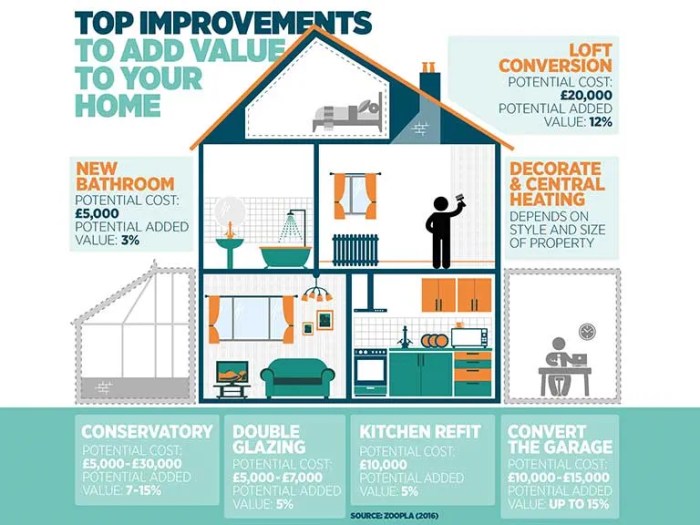
Home automation, also known as smart home technology, has become increasingly popular in recent years, offering numerous benefits for homeowners. By integrating smart devices into your home, you can enhance security, convenience, and energy efficiency, creating a more comfortable and connected living experience.
Benefits of Home Automation
Home automation offers a range of advantages that can significantly improve your lifestyle. Here are some key benefits:
- Enhanced Security: Smart home devices, such as security cameras, motion sensors, and smart locks, can deter intruders and provide real-time monitoring of your property, even when you’re away. These devices can send alerts to your smartphone if they detect any suspicious activity, allowing you to take immediate action.
- Increased Convenience: Home automation simplifies everyday tasks, making your life easier. You can control your lights, thermostats, appliances, and other devices remotely using your smartphone or voice commands. This allows you to adjust your home’s environment to your preferences, even when you’re not home.
- Improved Energy Efficiency: Smart home devices can help you save energy and money on your utility bills. Smart thermostats can learn your heating and cooling preferences and adjust the temperature accordingly, while smart lighting can automatically turn off lights when a room is empty. This can lead to significant reductions in your energy consumption.
Types of Smart Home Devices
The smart home market offers a wide range of devices with diverse functionalities. Here’s a table showcasing some popular types of smart home devices:
| Device Type | Functionality |
|---|---|
| Smart Speakers | Voice control for music playback, home automation tasks, and information retrieval. |
| Smart Lights | Remote control and automation of lighting, including dimming, color changing, and scheduling. |
| Smart Thermostats | Automated temperature control, energy savings, and remote access. |
| Smart Security Cameras | Real-time monitoring, motion detection, and remote access. |
| Smart Locks | Keyless entry, remote locking/unlocking, and access control. |
| Smart Appliances | Remote control, scheduling, and monitoring of appliances such as ovens, refrigerators, and washing machines. |
Setting Up a Home Automation System
Setting up a home automation system can be straightforward, especially with the availability of voice assistants like Amazon Alexa, Google Assistant, and Apple Siri. These assistants can be used to control compatible smart home devices. Here’s a step-by-step guide:
- Choose a Voice Assistant: Select a voice assistant that aligns with your existing ecosystem (e.g., Amazon Alexa for Amazon Prime users, Google Assistant for Android users).
- Set Up Your Voice Assistant: Download the corresponding app on your smartphone and follow the on-screen instructions to set up your voice assistant account.
- Connect Your Smart Devices: Ensure your smart devices are compatible with your chosen voice assistant. Most devices have clear instructions for connecting to the assistant via Bluetooth or Wi-Fi.
- Configure Device Settings: Once connected, you can configure device settings, such as setting schedules, creating routines, and assigning voice commands.
- Start Using Voice Commands: Use your chosen voice assistant to control your smart devices. For example, you can say “Alexa, turn on the lights” or “Hey Google, set the thermostat to 72 degrees.”
Choosing the Right Smart Home Devices
When choosing smart home devices, it’s important to consider your specific needs and preferences. Here are some tips to guide your decision:
- Define Your Goals: Determine what you want to achieve with home automation, such as enhanced security, convenience, or energy efficiency. This will help you narrow down your device choices.
- Compatibility: Ensure that the devices you choose are compatible with your existing smart home ecosystem and voice assistant.
- Budget: Smart home devices can range in price, so set a budget and stick to it. Consider the cost of individual devices as well as the potential for future upgrades.
- Reviews and Ratings: Research different devices and read reviews from other users to get an idea of their performance and reliability.
- Ease of Use: Choose devices that are easy to set up and use, especially if you’re not tech-savvy.
Closing Notes
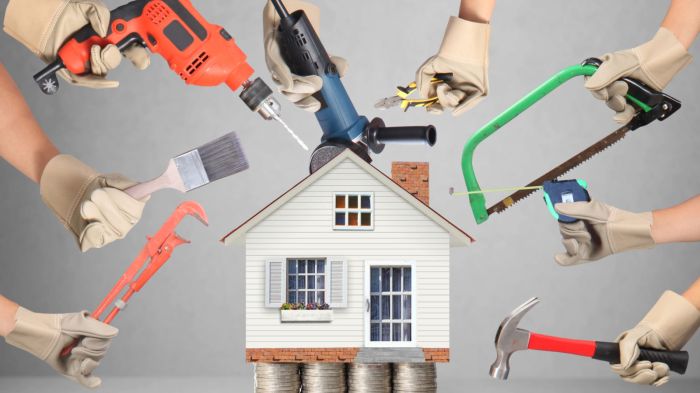
As you embark on your home improvement journey, remember that every project, big or small, has the potential to significantly impact your lifestyle and property value. By carefully considering your needs, budget, and the latest trends, you can make informed decisions that create a home that is both functional and aesthetically pleasing.
Whether you choose to upgrade your kitchen, transform your bathroom, enhance energy efficiency, or create an outdoor oasis, the possibilities are endless. Let this guide be your compass as you navigate the exciting world of home improvements.
Comments are closed.